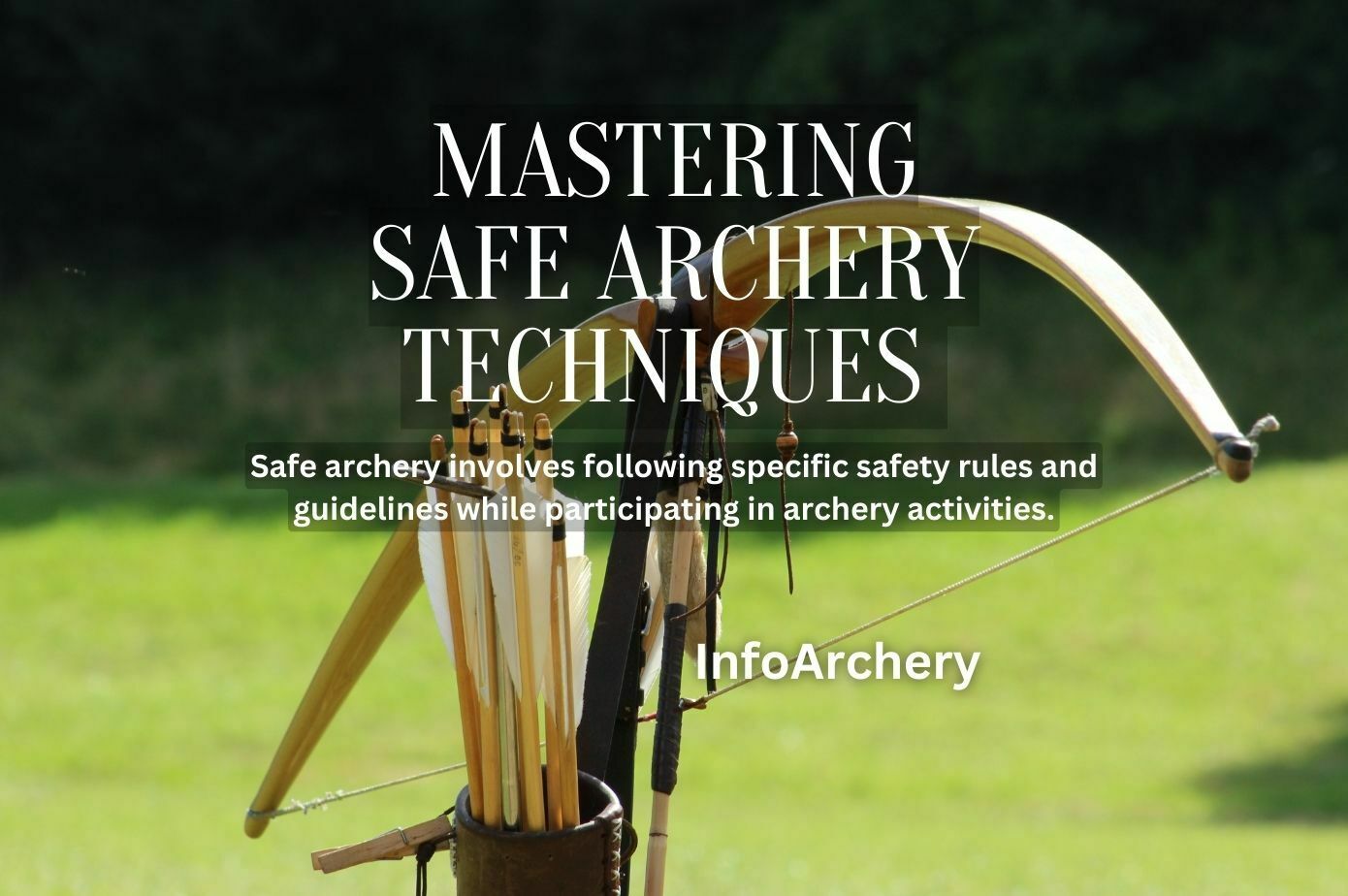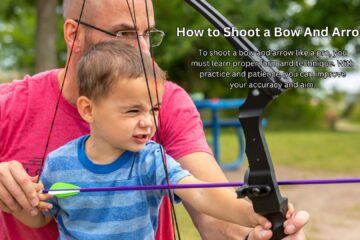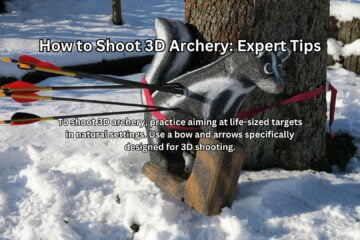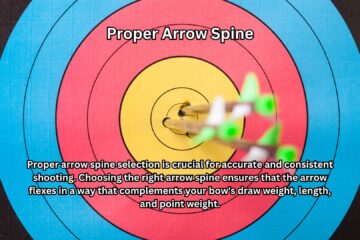Safe archery involves following specific safety rules and guidelines while participating in archery activities. Archery is a popular and exciting sport for people of all ages, but it’s essential to always prioritize safety to prevent accidents and injuries.
Archery is a sport that has been around for centuries and originated as a hunting tool. Nowadays, it’s a popular competitive sport and a fun activity enjoyed by many. However, like any sport, there are risks involved, which is why safety is crucial while engaging in archery activities.
Safe archery requires taking precautions such as wearing protective gear, knowing the proper technique for using the bow and arrows and being mindful of others in the area. By following safety guidelines, archers can have fun while ensuring everyone’s well-being. In this article, we’ll explore safe archery practices and tips to promote a safe and enjoyable experience for all.
Essential Equipment
Safe archery requires the right equipment. With several types of bows, arrows, and gear available, it’s essential to know how to select what’s right for you.
Types Of Bows (Compound, Recurve, Longbow)
Before you start, it’s important to know the different types of bows to make an informed decision.
- Compound bows: Suitable for beginners with adjustable draw weights to ensure consistent aim
- Recurve bows: Affordable and famous for targeting competitions
- Longbows: A traditional bow that requires more effort and expertise to use
Choosing The Correct Bow And Arrows
Selecting an appropriate bow and arrow set is critical for safety and success. Some factors to consider include:
- Age and strength
- Intended purpose (e.g. Hunting or target practice)
- Budget
Ensure that the arrows you choose are of appropriate length and weight for your bow and your size.
Proper Selection Of Other Gear And Accessories (Sights, Rests, Quiver)
To take accurate shots and improve your technique, it’s important to have the appropriate equipment and accessories. Some popular options include:
- Sights: Assist with aiming and consistent shots
- Rests: Support the arrow shaft as it rests on the bow
- Quivers: Hold your arrows in a safe and easily accessible position
Overall, make sure that you are selecting gear that feels comfortable to use and is appropriate for your skill level and needs.
Remember, safe archery is all about proper equipment, training, and practice. With a correct selection of gear, you’ll be better on your way to hitting your target and reaching your goals.
Proper Shooting Form for Safe Archery
Safe archery is a thrilling and popular sport worldwide, enjoyed by people of all ages and backgrounds. However, it is imperative to pay close attention to proper technique and safety guidelines to avoid potential injuries. In this blog post, we’ll be discussing the importance of proper shooting form to help you improve your accuracy and make the most of your archery experience.
The Correct Stance, Grip, And Posture
To start, let’s talk about the foundational elements of proper shooting form, including an appropriate stance, grip, and posture.
- Stance: Begin by standing shoulder-width apart with your feet perpendicular to the target. Keep your body weight equally distributed on both legs to maintain balance and stability.
- Grip: Your grip should be firm yet relaxed, with your fingertips lightly wrapping around the bow’s handle. Aim to keep your wrist straight and avoid twisting it.
- Posture: When in shooting position, imagine a straight line running through your spine, neck, and head, and keeping your back muscles engaged. Try to avoid leaning forward or backward and keep your head aligned with your body.
Aligning Your Body With The Target
Once you have established proper foundational elements, it’s time to align your body with the target. This step is crucial for accuracy and consistency.
- Shoulder alignment: Start by positioning your non-dominant shoulder towards the target. This will help align your upper body with the target and establish consistent placement and follow-through.
- Bow arm: Keep your bow arm extended straight towards the target, with your elbow locked in position and your hand gripping the bow handle. Avoid bending your arm or collapsing your shoulder.
- Draw hand: The hand holding the bowstring should be positioned near your face, with your elbow pointing towards the target. Keep your fingers relaxed and aligned with the bowstring to minimize unnecessary movements during the release.
Consistently Executing A Shot Sequence
Finally, it’s time to concentrate on consistently executing a shot sequence. This involves a series of steps that should be practiced and adhered to for optimal results.
- Nocking the arrow: Start by nocking the arrow onto the bowstring and ensuring it is securely in place.
- Drawing the bowstring: Draw the bowstring back to your anchor point consistently, using the same motion for each shot.
- Aiming: Focus on your target and take aim, keeping your eye on the prize through your sighting device or instinctively.
- Release: Carefully release the bowstring, avoiding any jerky movements that may cause inaccuracy. Remember to follow-through by holding your position until the arrow hits the target.
Proper shooting form is essential to effective and safe archery. By following the steps outlined above, you’ll be well on your way to improving your accuracy and overall experience. Happy shooting!
Safety Measures
Safe archery is an exhilarating sport that requires focused skill and accuracy to hit the bullseye. Of course, as with any sport, safety always comes first. Before you begin your first archery session, it’s crucial to understand safety measures to ensure you’re not only successful but also safe.
Let’s talk about some of the essential safety measures you should observe while practicing archery.
Basic Safety Precautions When Handling A Bow
When handling a bow, there are a few safety measures you need to keep in mind. Here are some basic practices to follow:
- Always treat your bow as if it’s loaded, even when it’s not.
- You should never point your bow, even if it’s loaded, at someone or something you don’t intend to shoot.
- Always check the safety of your bow before handling it to ensure that it’s in good condition and has no visible flaws.
- Keep an eye on the people around you to ensure they’re following the safety rules.
- Remember that bows are not toys, and if you’re not careful, they can cause serious injuries.
The Importance Of Using Armguards And Finger Tabs
When practicing archery, it’s essential to protect yourself from getting injured. An armguard is a protective gear worn on the forearm of the arm that holds the bow. It prevents the bowstring from hitting and hurting the arm. Similarly, a finger tab is a leather or synthetic garment that fits on the fingers to prevent the bowstring from injuring the fingers when the arrow is released.
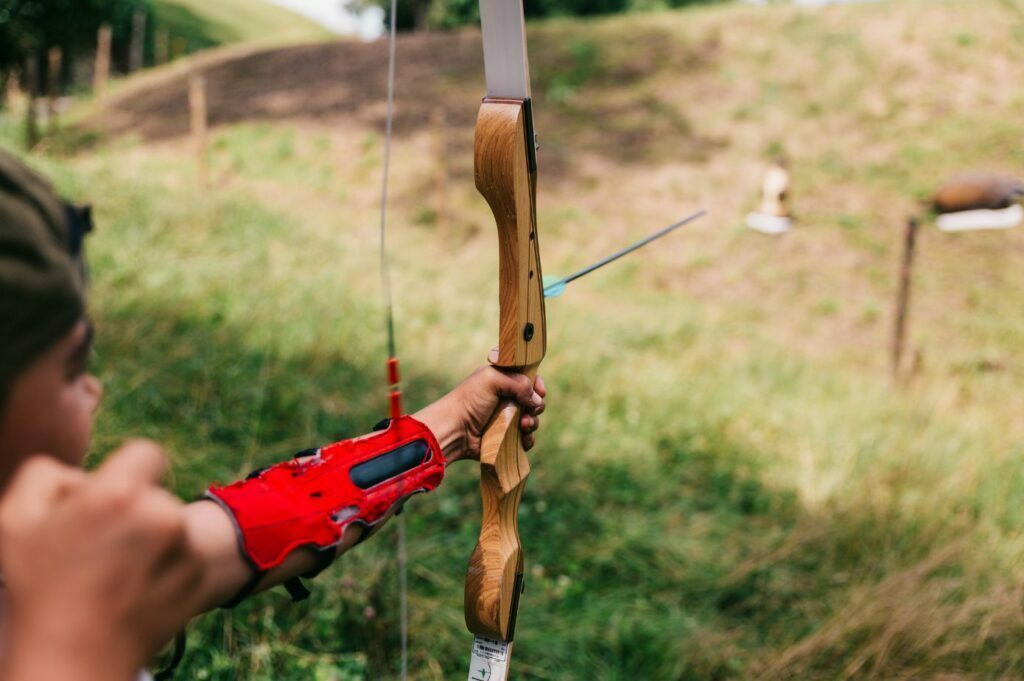
Here’s why using armguards and finger tabs are critical for your safety:
- Armguards protect your forearm from the bowstring during release.
- Finger tabs provide a smooth surface for the bowstring to glide over, preventing cuts and bruises on your fingers.
- They offer additional grip on the bowstring, making the shot more accurate.
- Wearing these gears will prevent the risk of serious injuries that may require medical attention.
What To Do In Case Of An Emergency
No matter how cautious you are, accidents happen. It’s essential to know what to do to prevent a small injury from becoming a more significant problem.
- In case of an emergency, clearly shout out ’emergency’ to alert your fellow archers.
- If an arrow is mistakenly fired, scream ‘arrow away’ loudly.
- Never run on the archery field, even in case of an emergency.
- If an injury occurs, stop what you’re doing and treat the injury with urgency.
- Always keep a first aid kit at the venue and call emergency services if needed.
Archery can be a safe and enjoyable sport when safety measures are followed. By strictly following these safety tips and using protective gear, you will ensure that no injuries happen while practicing archery. Remember, safety always comes first, and it’s crucial to follow all the safety guidelines, even when no one is watching.
Advanced Techniques
Safe Archery – Advanced Techniques
Archery is an ancient and fascinating sport that requires precision, focus, and patience. As you grow in skill and confidence, there are advanced techniques that will help you to improve your aim, adjust for weather factors, and shoot effectively at various distances and angles.
In this section, we will explore some of these techniques in detail.
Aiming And Targeting Tips
When it comes to archery, aiming is everything. Here are some tips to help you improve your aim and hit your targets more accurately:
- Choose a fixed point to aim at, rather than a general area.
- Keep both of your eyes open when aiming.
- Focus your gaze on the center of the target.
- Make sure that your bow hand is steady and that your grip is relaxed.
- Practice regularly to improve your muscle memory and consistency.
Adjusting For Wind And Weather Factors
Weather factors such as wind, humidity, and temperature can all affect your arrow’s trajectory, making it more difficult to hit your targets with accuracy. To overcome these factors, here are some techniques that you can use:
- Adjust your aim to compensate for winds that are blowing left or right, high or low.
- Shoot your arrows faster to compensate for high humidity or low temperatures.
- Use a different arrow weight to adjust for changing weather conditions.
How To Shoot At Various Distances And Angles
Shooting at different distances and angles can pose unique challenges for archers. Here are some tips to help you shoot effectively in these situations:
- Practice regularly at varying distances to train your muscles for different scenarios.
- Adjust your aim to compensate for steep angles or uneven terrain.
- Develop a consistent and repeatable form to increase your accuracy.
- Use visual cues to ensure that you are aiming correctly.
With these advanced techniques, you can take your archery skills to the next level. Practice regularly, stay focused, and remember to enjoy the journey.
Frequently Asked Questions On Safe Archery
Is Archery Safe For Beginners?
Yes, archery is safe for beginners as long as they follow basic safety rules. Beginners must use proper equipment such as arm guards, finger tabs, and protective glasses. They should also practice under the supervision of an experienced coach or instructor.
What Safety Gear Do I Need For Archery?
To ensure safety during archery, you need to use protective gear such as arm guards to protect your forearm from string slap, finger tabs to protect your fingers from the bowstring, and protective glasses to protect your eyes.
Can I Do Archery Without An Instructor?
It’s not recommended to do archery without an instructor or coach. The instructor or coach not only teaches archery techniques but also guides you on basic safety measures. Without proper guidance, you may be at risk of injury.
How Far Should I Stand From The Target When Doing Archery?
The standard distance for indoor range archery is 18 meters, while outdoor range archery distance can vary from 30 to 90 meters. Beginners should start by practicing at a shorter distance and gradually increase the distance as they improve.
Can Children Do Archery?
Yes, children can do archery as long as they follow basic safety rules and use proper equipment. Children should practice under the supervision of an experienced coach or instructor who can guide them on proper techniques and safety measures.
Conclusion of Safe Archery
Archery can be an exhilarating and exciting sport, but it’s vital to prioritize safety while enjoying it. By following the rules outlined in this post, it’s possible to minimize the chances of accidents, injury or harm to yourself or others.
The most important rules to remember relate to proper handling and storage of equipment, staying aware of your surroundings, and following the instructions of experienced professionals. Education is key, and researching the sport of archery before participating and adhering to safety guidelines is key to a safe experience.
Above all, keep in mind the importance of safety and don’t sacrifice it for the sake of speed or thrill. Safe archery is not only enjoyable, but it ensures that the sport remains accessible for generations to come.

